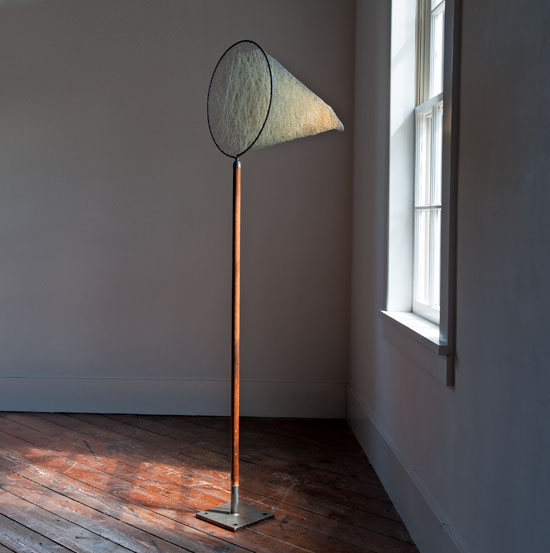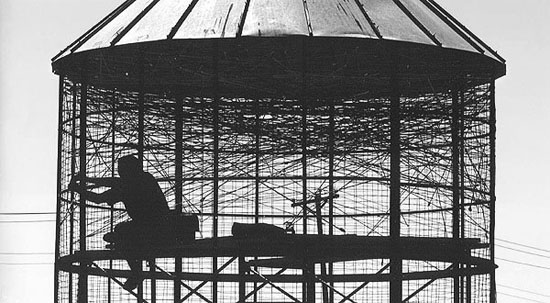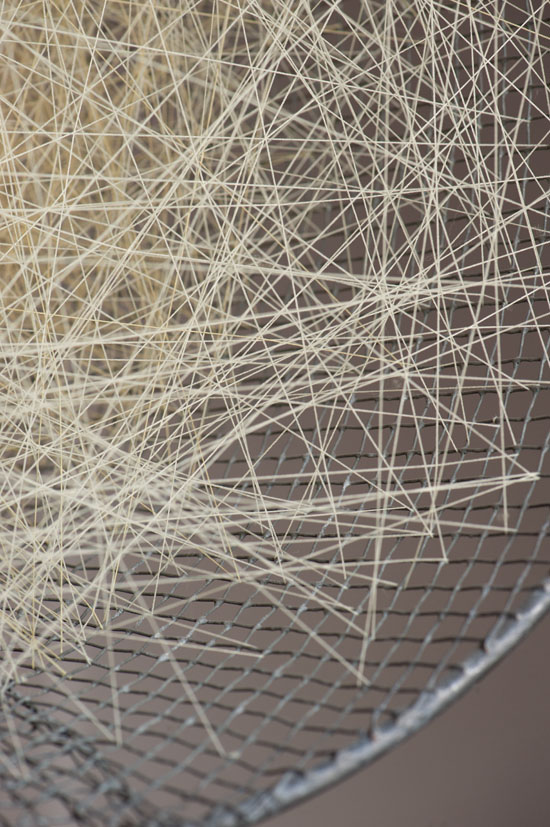Ten years ago, I wound a spool of thread around a bent-up steel tomato cage for no reason at all. The idea of using thread to make art never entered my mind. I was just playing.
Trained as an architect, I thought in terms of solid things made from serious materials like concrete, glass, wood and steel. I had no affinity for textiles of any kind. Thread was soft, formless and barely visible. It also came in colors, which any sophisticated architect would be suspicious of. Furthermore, I found it difficult to handle, and I was surely not using it for what it was intended.
As I continued to wrap the deformed metal frame, a surface began to emerge. Not a solid surface, but an intricate, transparent one that allowed the entire volume of the cylindrical shape to be seen at once. As the lines of thread multiplied, their color intensified and light played off them. It was magical. I realized that textiles were none other than surfaces like the one I was making, only more solid. I became fascinated with the idea of an in-between surface, neither solid nor completely transparent.

6rw Skimmer, Randy Walker, old cheese curd skimmer, nylon thread, steel base, 67.5″ x 21.5″ x 15.25″, 2008
Pleased with my three-dimensional creation, I went to the sewing store and bought an entire shelf of this thread. I searched for other things to wrap and found saw blades and kitchen sieves, a badminton racquet, scythes, and all manner of rusty implements to be ideal for my fibrous interventions. With each framework, I had to invent a way of adapting the fiber, and it was unknown and exciting territory.
I eventually discovered the work of Naomi and Masakazu Kobayashi, and from there browngrotta arts. I realized that browngrotta represented a small yet international community of artists that were pushing the traditional boundaries of textile arts. It was a place where art, craft, sculpture and architecture merged, unbounded by narrowly defined categories.
Over the years, I have continued to search for objects and spaces for my artistic investigations in thread. My explorations have led me to investigate the possibilities of fiber as a workable medium in architectural settings. At this large, public scale, I have used found objects and spaces that include an abandoned corncrib, concrete grain elevator, a historic wrought iron bridge and urban water fountains. Using fiber in the public realm challenges accepted notions of permanence and process traditionally associated with public art. I find that I must invest time not only in my art making, but in the research and development of fiber technology. On a more philosophical level, fiber has caused me to reflect deeply on what I am trying to do as an artist, and where my work is taking me.
Most of the time I am up to these challenges, but I have set out on a lonely and meandering artistic path. browngrotta is for me a beacon. I have only to look through these artists’ work to remind me of the unlimited and largely unexplored potential of this medium.
Randy Walker
November 2012


